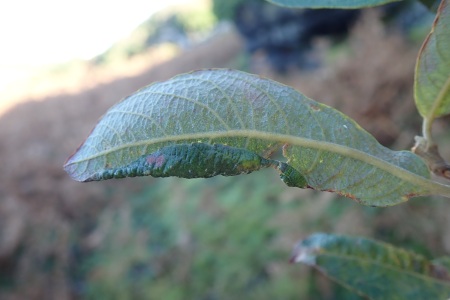The weather has been so good recently that I have been tempted out to wander on Raasay. Two days ago I spotted two plants of Glebionis segetum (Corn Marigold) in flower on a road verge near Inverarish.

Glebionis segetum (Corn Marigold)
To quote my own words (lightly edited) “Reported in oat fields on Raasay and Fladday in 1930s and near Balachuirn in 1969. Lost with the cessation of arable farming. One plant emerged from soil brought in from Alness in Easter Ross for road repair purposes in 2006.”
These could have arisen from long-dormant seed following forestry operations, but seem more likely to be the result of scattered wildflower seed.
Yesterday I discovered about a dozen plants of Leycesteria formosa, (Himalayan Honeysuckle, Flowering Nutmeg, Himalaya Nutmeg or Pheasant Berry) near the dog kennels. This is a first in the wild for Raasay though it has been spreading rapidly on Skye and the adjacent mainland. Apart from Kinloch Castle on Rum, all vice-county records are in the 2005 to 2018 range and it is now known in 13 tetrads in Skye and Raasay. This is likely to be an underestimate given that Seth and I added a tetrad in Uig ten days ago and I added the one on Raasay this week.

Leycetseria in November




